NIL
What is NIL Go? Why is it latest subject of debate?
ORLANDO — The man steps onto a raised platform, walks behind a podium and leans toward the microphone. Before him, more than 200 college athletic administrators shift to the front of their seats. For months now, they’ve been waiting for this moment. “I’m Karl,” the man says, “with Deloitte.” Karl Schaefer is a young man […]
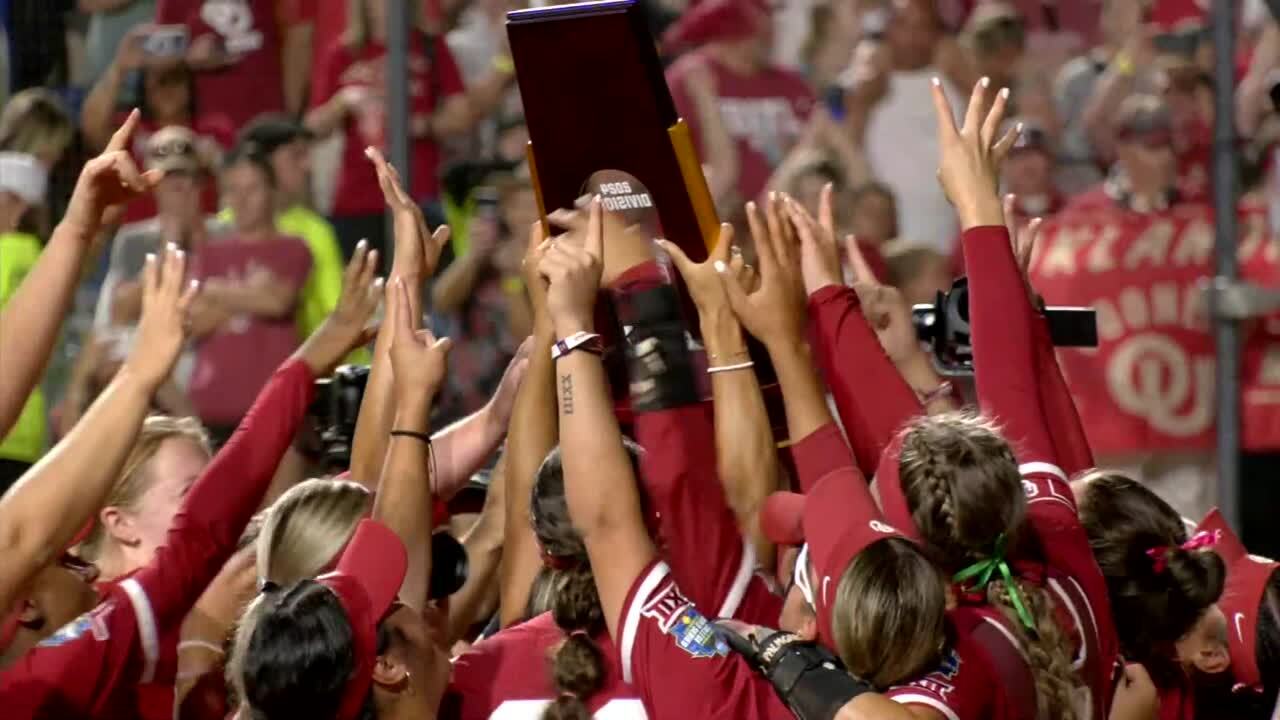


ORLANDO — The man steps onto a raised platform, walks behind a podium and leans toward the microphone.
Before him, more than 200 college athletic administrators shift to the front of their seats. For months now, they’ve been waiting for this moment.
“I’m Karl,” the man says, “with Deloitte.”
Karl Schaefer is a young man with perfectly cropped hair, a sharp grin and slender frame. He is here to lead a 40-minute presentation on the single most talked-about concept of college athletics’ new revenue-sharing era: the Deloitte-run clearinghouse dubbed “NIL Go.”
Though it remains unsaid by those in power, the goal of NIL Go is quite clear: prevent booster payments to athletes that, for four years now, have been masquerading as commercial and endorsement deals.
As Schaefer flips through slides of the NIL Go software system, for the first time revealed publicly, whispers within the room build to murmurs. Attendees capture slides with photos. Some video the entire event. Others scribble notes on a pad.
How Deloitte and the new enforcement entity, the College Sports Commission, plan to prevent booster pay is the target of much criticism and fascination — plenty of it shrouded in secrecy for the last many months.
In central Florida, at an annual conference of administrators this week, the shroud was at least partially lifted. Not only was the platform’s interface shown on a giant projection screen during Schaefer’s presentation — including the six-step submission and approval process — but, in interviews with Yahoo Sports or during other public presentations, college sports executives who helped craft the system answered questions that, up to this point, had remained unanswered.
While many doubt that the clearinghouse will withstand inevitable legal challenges, administrators here provided legitimate reasons for why they believe in its long-term survival. Most notable of those, says NCAA president Charlie Baker, is that the clearinghouse’s appeals process — arbitration — is equipped with subpoena powers.
“They do have that power,” Baker told Yahoo Sports. “Arbitration typically has subpoena power and I’m pretty sure since this one sits inside an injunction, they will have it.”
Officials at the power conferences confirmed that “significant subpoena powers” exist under the arbitration appeals process, but those powers are less expansive than subpoena authority within a courtroom. The decision to use subpoena powers and how exactly to use them — limited or broad — is expected to rest with the arbitrator presiding over the appeals process.
A subpoena compels individuals or entities to produce evidence under penalty of law, such as turning over text messages, emails and phone call logs as well as testifying before investigators. It is one of the more important tools for officers of the law, such as police investigators — and something that was never available to the NCAA enforcement staff.
“We won’t have complete subpoena power, but if an athlete goes into arbitration … those records, you can get access to some of those records,” said Ohio State athletic director Ross Bjork, who is a member of a settlement implementation committee that helped construct the new enforcement entity.
“It’s going to be a new day.”
Advertisement
The algorithm
Back in the Deloitte presentation room, Schaefer is explaining the submission process for NIL Go. Athletes are required to submit third-party NIL deals of $600 or more using a web-based submission system, not unlike an online registration system for, say, a passport.
Shaefer explains, gesturing toward a giant projection screen, that the clearinghouse makes three determinations once a deal is submitted:
Is the third party an “associated entity” with the university, such as a booster, or a business contracted with a school like a university sponsor or apparel brand? If so, more intense scrutiny is applied in the vetting process. Public companies can, and many of them will, be deemed as associated entities.
Is the deal for a “valid business purpose?” The third-party business, brand or individual must be receiving true value from the activities, such as an autograph session, television commercial or speaking engagement.
Is the deal within Deloitte’s “range of compensation” paid to similarly situated individuals? This is perhaps the most criticized of the concepts. Deloitte created “the range of compensation” through an algorithm using fair market value analysis, comparing similar types of NIL deals struck between an athlete and the third party.
More is now known about that algorithm.
Clemson athletic director Graham Neff, one of the implementation committee members, details the factors used to form a compensation range: “Athletic performance is a big part of it. Your social media reach and following. Market — where schools are at. The reach of your school within said market.”
This will vary by school. Neff offers an example. “The reach of Georgia Tech in Atlanta is different than the reach of Georgia State,” he says.
Neff believes that a “majority” of NIL deals will derive from “associated companies,” as school sponsors, multi-media rights partners and individual alumni and boosters work to provide universities with additional compensation so they can exceed the $20.5 million revenue sharing cap that each school is afforded. Third-party NIL compensation that passes the clearinghouse does not count against the cap.
Even those who helped craft the new enforcement entity acknowledge that the system is attempting to do a very difficult thing: bring regulation to an enterprise that has, for four years now, seen little to no regulation or enforcement of athlete compensation.
“There’s some toothpaste back in the tube a little bit given the environment,” Neff said.
For example, Deloitte officials claim that 70% of past deals from booster collectives would have been denied in their algorithm, while 90% of past deals from public companies would have been approved. Deloitte has also shared with officials that about 80% of NIL deals with public companies were valued at less than $10,000 and 99% of those deals were valued at less than $100,000.
These figures suggest that the clearinghouse threatens to significantly curtail the millions of dollars that school-affiliated, booster-backed collectives are distributing to athletes.
“No one is trying to restrict someone’s earning potential, but what we’re trying to say is, ‘What is the real market?’” Bjork says. “Everybody you talk to about the pro market will tell you that NIL deals for pro athletes are really small. In the collective world, we created a false market.”
Denial, approval and arbitration
Displayed on the giant screen before hundreds of athletic administrators is the six-step clearinghouse submission and approval process.
Step 6 lays out the process for a player if his or her deal is denied by the clearinghouse because it either is not struck for a valid business purpose or it does not meet the compensation range.
(1) Revise and resubmit the deal so that the compensation amount falls within the algorithm’s range. For instance, if the clearinghouse deems that a submitted $1 million deal should be $500,000, the athlete can resubmit for $500,000 and the school, if it so chooses, can compensate the athlete for the other $500,000 through its revenue-share pool.
(2) Cancel the deal completely.
(3) Request arbitration as an appeals process.
(4) Accept the rejected deal as is. In this case, the athlete “may face enforcement consequences (e.g., loss of eligibility),” the Deloitte presentation slide reads.
According to settlement terms, attorneys for the plaintiffs (the suing athletes) and defendants (NCAA and power conferences) will work together to select a neutral arbitrator or arbitrators to preside over these cases. Individual arbitration processes are expected to last no more than 45 days.
In an interview last fall, plaintiff lawyer Jeffrey Kessler described the arbitration as a trial-like set of hearings in front of an arbitrator — the new enforcement entity on one side (NCAA and power conferences) and the athlete on the other side.
How an arbitrator rules may “depend on what evidence” each side produces, Kessler said. As Baker and others have noted, that evidence may now be generated through limited subpoena power.
But one lingering question remains: Will an athlete’s school fight alongside him or her in the case?
“I expect that if the athlete pursues it, the school will support the athlete and help provide the athlete with counsel to help represent them in that challenge,” Kessler said.
Penalties for NIL violations
Implementation committee members say they are finalizing a “menu” of penalties for those found to commit violations within this new revenue-sharing era, most notably those found to have (1) circumvented the cap with old-fashioned cheating or intentional or accidental miscalculations; and (2) tampered with another college athlete or prospect who is under contract.
Officials decided against using a set penalty matrix as the NCAA currently does (Level I, Level II, etc.). Instead, they are providing the new College Sports Commission CEO, Brian Seeley, with the flexibility to choose penalties from a wide range of options, depending on the individual circumstance.
“Those penalties being worked through are going to be significant and are going to be different than any penalties we’ve had previously,” said new Michigan State athletic director J Batt, a member of the implementation committee. (Batt recently left Georgia Tech after he was named the AD at Michigan State.)
An example of a new kind of penalty is a reduction in transfers that a school can acquire from the portal, Bjork says. But there are others. A postseason ban remains among the penalties, said Desiree Reed-Francois, the Arizona athletic director and implementation committee member.
There are also stiff fines — multi-million dollars in value — that may be levied against schools, administrators and coaches. Suspensions, for coaches and administrators, are on the penalty menu as well.
“The fines are substantive,” Reed-Francois says.
One penalty is off the table. Administrators say that reducing a school’s revenue-share pool for subsequent years is not permitted. The settlement guarantees that schools are afforded the same revenue share pool.
Pushback
The clearinghouse has made its way to the U.S. Capitol.
During a congressional hearing over college sports on Thursday, Rep. Lori Trahan, a Democrat from Massachusetts, chided college leaders for instituting a new enforcement process that “guarantees people in power always win and the athletes who fuel this multi-billion dollar industry always lose.”
One of the witnesses in that hearing, Ramogi Huma, the executive director of the National College Players Association, chimed in as well, accusing the NCAA and conference leadership as wanting to “shut down boosters’ ability to pay players just to monopolize it” themselves.
College executives reject these notions and consider all of these elements — even the new enforcement process — as protected by a legally binding settlement. The new enforcement entity was not created by committee members in some “backroom,” Bjork says. The implementation committee only provided structure to an enforcement piece that is “codified” within the settlement.
“There are processes here that have been approved by the court and the plaintiffs and the defendants that people are going to be expected to follow,” Baker told Yahoo Sports. “Given so much of what’s been going on in the third-party space hasn’t been accountable or transparent, and has made a lot of people outside of college athletics a lot of money, I can understand why there might be some grumpiness about this.”
Soon, power conference schools — and others opting into the settlement — are expected to sign an affiliation or membership agreement. With this binding document, schools waive their right to sue over enforcement decisions and commit to settlement terms, even if their state laws contradict them.
The agreement — itself the subject of legal concerns, even from some schools — is an indictment on an industry of stakeholders that, for competitive reasons, are constantly scrambling to bend, break and shatter rules to gain even the slightest edge.
Earlier this week in Orlando, members of the implementation committee publicly implored schools to follow rules.
“This has to be a mindset change,” Bjork told the audience. “We see all the reports and naysayers, that ‘we’re going to go back to old-school cheating and all these things and that this is not going to work.’ This has to work.”
“This will work if we make it work,” Reed-Francois said. “We need to shift our mindset and make this work.”
Can it be done? But what if athletes decide not to submit any of their third-party deals at all?
“People will be turning in people,” Reed-Francois said. “There’s a lot more transparency now.”
Back in the convention hall, Schaefer, from Deloitte, is winding down his presentation. He thanks the crowd before beginning to walk off the stage.
From among the crowd, a few raised hands emerge. Folks have questions.
Others in the audience remind the hand-raisers of something announced before the presentation began: The Deloitte employees are not taking questions.
NIL
Insider reveals NIL move that won over Texas Tech’s 5-star commit
The post Insider reveals NIL move that won over Texas Tech’s 5-star commit appeared first on ClutchPoints. Texas Tech football launched the biggest fireworks on the recruiting end for Fourth of July. Felix Ojo spurned multiple powers for the Red Raiders Friday. Becoming a rare five-star commit for the Lubbock university on the college football […]
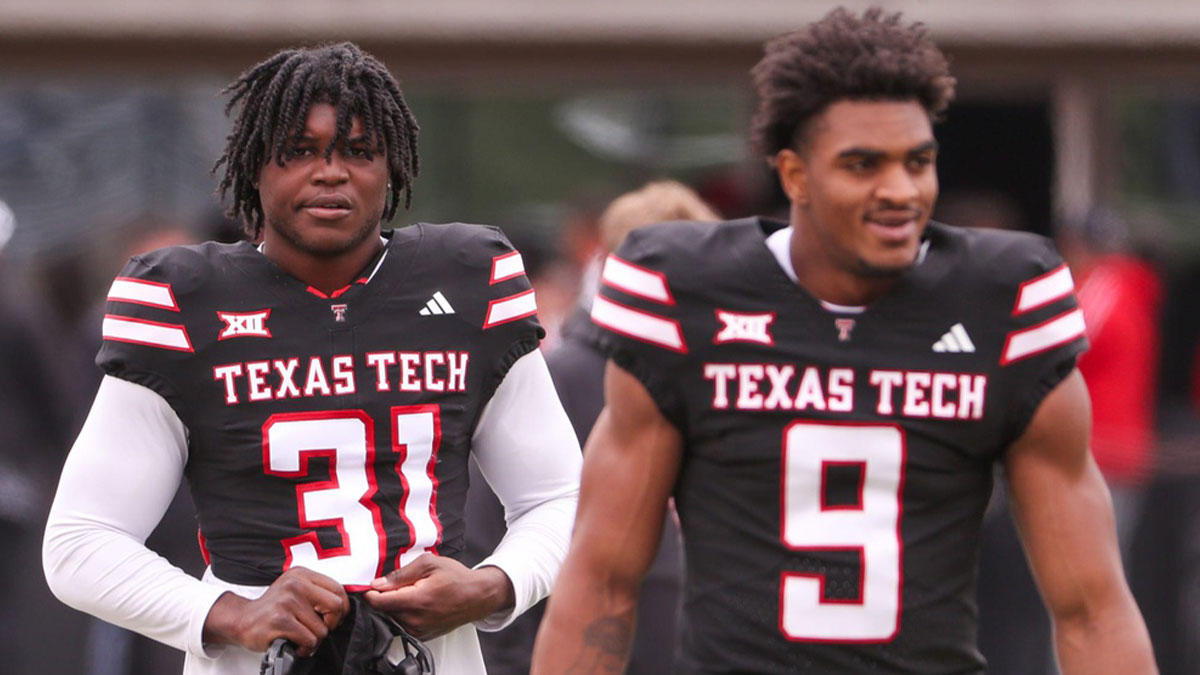
The post Insider reveals NIL move that won over Texas Tech’s 5-star commit appeared first on ClutchPoints.
Texas Tech football launched the biggest fireworks on the recruiting end for Fourth of July. Felix Ojo spurned multiple powers for the Red Raiders Friday. Becoming a rare five-star commit for the Lubbock university on the college football recruiting trail.
Advertisement
But how were the Red Raiders able to coax the dominating tackle? Especially with Texas, Michigan, Florida even defending national champion Ohio State all in the final mix for him?
Texas Tech turned to NIL money to convince Ojo that Lubbock is the place for him. The Athletic helped pull back the curtain on the Red Raiders courting Ojo.
Ojo agreed to a three-year, $2.3 million revenue-sharing contract, The Athletic revealed on Saturday. But the outlet also delivered clarity on one reported contract involving the Mansfield, Texas talent.
How much Felix Ojo could earn after joining Texas Tech recruiting class

Nathan Giese/Avalanche-Journal / USA TODAY NETWORK via Imagn Images
Ojo’s agent Derrick Shelby of Prestige Management spearheaded the NIL process for the newest Red Raider.
Advertisement
Turns out there was a contract figure that needed to be clarified by The Athletic.
“ESPN reported on Friday that Ojo was receiving a three-year deal worth $5.1 million, according to his agent, Derrick Shelby of Prestige Management. Shelby confirmed those figures to The Athletic on Saturday, but three Texas Tech sources refuted that number, with two confirming that Ojo is scheduled to receive an annual compensation of $775,000 per year for three years from Tech’s revenue-sharing pool,” the report reads.
There’s additional figures attached to Ojo. He received a verbal agreement “that can escalate the total value of the contract into the $5 million range.” However, that figure surfaces “if there were a large jump in the revenue sharing cap for schools or if there is minimal regulation of schools’ adhering to the cap.”
Ojo isn’t the only massive recruiting win. Four-star safety Donovan Webb spurned Michigan for Texas Tech on Wednesday. Webb originally was favored to land with the Wolverines per multiple outlets. Texas Tech is now 25th overall in the national recruiting rankings per 247Sports for the 2026 class.
Related: 5-star WR shockingly picks Syracuse over Michigan football
Related: Georgia football way-too-early bold predictions for 2025 season
NIL
Texas Tech took NiJaree Canady NIL approach with 2026 five-star OT Felix Ojo, but football is not softball
Texas Tech took the NiJaree Canady NIL approach with 2026 five-star OT Felix Ojo. But paying big, guaranteed money to a proven softball pitching transfer who can single-handedly control games as compared to paying big, guaranteed money to an incoming freshman offensive tackle is a totally different kind of risk, especially in the new era […]

Texas Tech took the NiJaree Canady NIL approach with 2026 five-star OT Felix Ojo. But paying big, guaranteed money to a proven softball pitching transfer who can single-handedly control games as compared to paying big, guaranteed money to an incoming freshman offensive tackle is a totally different kind of risk, especially in the new era of revenue sharing with student-athletes.
Tech is paying Ojo $2.325 million – guaranteed – for the next three years (an average of $775,000 per season), with a verbal agreement that Tech will renegotiate up to $5 million total if NIL money goes back to a Wild West setup, according to Matt Zenitz of CBS Sports.
Additional info on Texas Tech’s deal with new five-star offensive tackle commit Felix Ojo:
A source tells @cbssports it’s a three-year deal averaging $775,000 a year with a verbal understanding that Tech will renegotiate up to $5 million if things shift back to a Wild West setup https://t.co/YjrV9oQdSy pic.twitter.com/T2MqDjOrKQ
— Matt Zenitz (@mzenitz) July 4, 2025
This is the kind of high-risk, high-reward precedent Tech set with Canady, who got $1,050,024 to sign with Tech after her sophomore season at Stanford and helped Tech finish runner-up to Texas in the championship final of the Women’s College World Series last month.
Canady’s record deal for a softball player was staggering but came with managed risk considering she had already earned NFCA National Freshman of the Year at Stanford in 2023 and followed that up by being named USA Softball’s Collegiate Player of the Year in 2024 all while leading the Cardinal to two straight WCWS appearances.
A guaranteed deal of this size for an incoming freshman football player in the revenue-sharing era of college athletics is a significant risk and will undoubtedly lead to more agents for high-end high school recruits demanding big, multi-year guarantees.
NIL
Jasper Johnson shines in Team USA’s dismantling of New Zealand
Team USA’s U19 team continued their dominant run in the FIBA World Cup on Saturday in Switzerland. Now Kentucky guard Jasper Johnson will get a change to play for a gold medal on Sunday in this international event. Let’s just say it was a long night for New Zealand. On Fourth of July weekend, USA […]

Team USA’s U19 team continued their dominant run in the FIBA World Cup on Saturday in Switzerland. Now Kentucky guard Jasper Johnson will get a change to play for a gold medal on Sunday in this international event.
Let’s just say it was a long night for New Zealand. On Fourth of July weekend, USA basketball continued to roll with a 120-61 victory. We nearly got a Team USA by 90 result.
Jasper Johnson finished the blowout win with 14 points on 11 field goal attempts with three three-point field goals in 18 minutes on the floor. Team USA was plus-12 with Jasper on the floor.
The top-25 recruit continues to impress in this international event. Before Jasper’s big performance, the guard was averaging 7.4 points, 1.4 assists, 1.2 rebounds, and one steal in 14.6 minutes off the bench while shooting 42.1 percent (8-of-19) from long range. Jasper is now shooting 42.3 percent (11-of-26) from downtown in this event. Kentucky’s young guard has shown some offensive efficiency that should translate to the next level. Many in the college basketball online community are taking notice.
“If Jasper Johnson is hitting shots from deep, you are at his mercy. The Kentucky guard is so crafty off the bounce that if you have to close out tight, he’s tough to stay in front of,” Field of 68 analyst Terrence Oglesby wrote on Twitter/X on Saturday. “I think he’ll have some big games this year, but the physicality of the SEC is different.”
Jasper Johnson’s skill and scoring potential has shown up in Switzerland. Now we’ll need to see how the young player will transition to the physicality of college basketball but we know this potential diaper dandy can get buckets.
Team USA will face Germany on Sunday in the gold medal game. Tip-off is scheduled for 2:00 p.m. ET/1:00 p.m. CT.
NIL
The Sporting News ranks Big 10 quarterbacks first to last for 2025 season
An exciting season appears to be ahead in the Big Ten. After all, the conference has produced the last two national champions. Now going for a third consecutive title, some good quarterback play is going to be required. Thankfully, the Big Ten is stacked with quality players at the position. Ranking them from top to […]

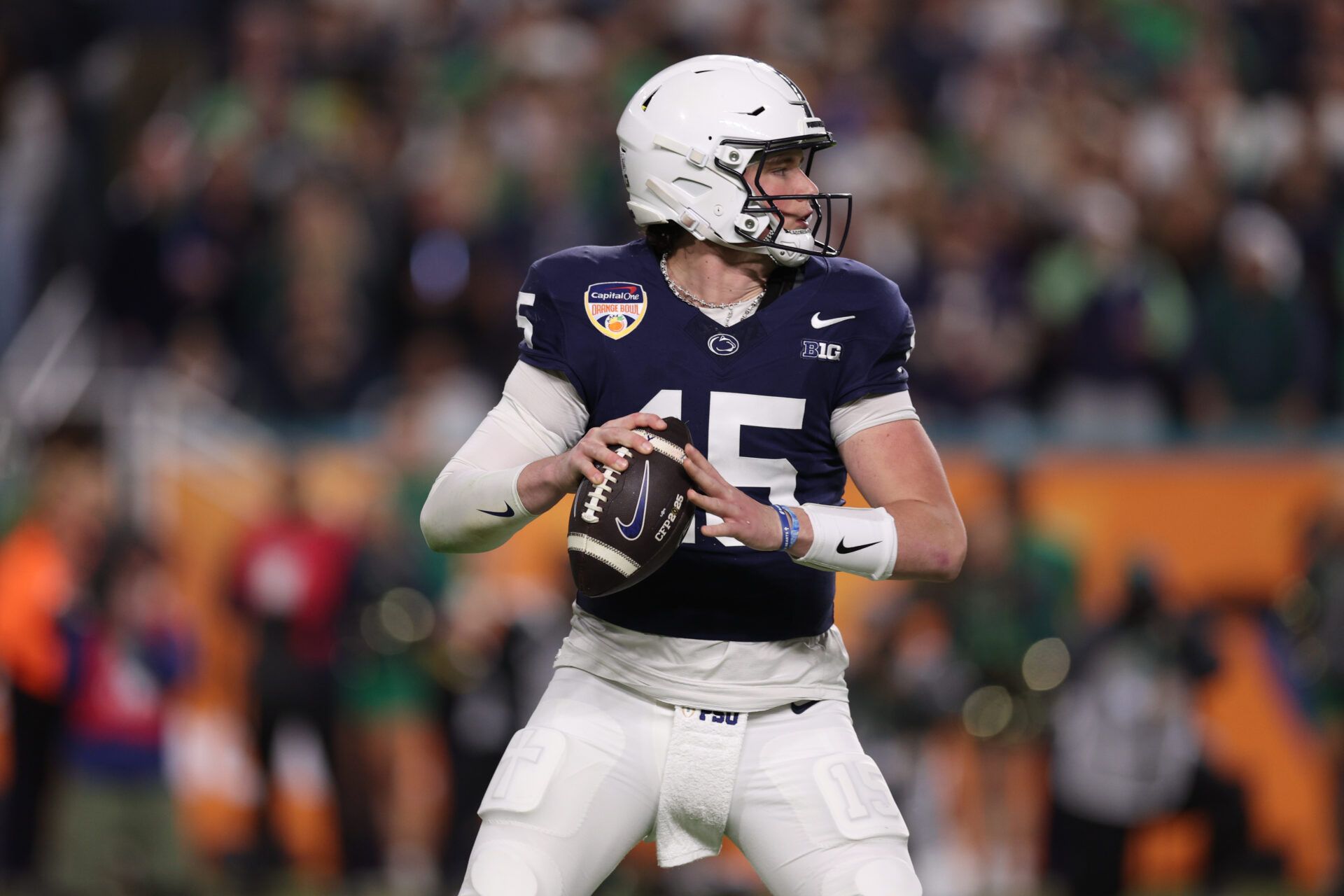
An exciting season appears to be ahead in the Big Ten. After all, the conference has produced the last two national champions. Now going for a third consecutive title, some good quarterback play is going to be required.
Thankfully, the Big Ten is stacked with quality players at the position. Ranking them from top to bottom is a tough task but the Sporting News took on the task. All 18 quarterbacks from one to 18, stretching coast-to-coast as the Big Ten does these days.
As much talent as there is, plenty of inexperience will be sprinkled throughout the conference. Being able to combine that with proven guys/projections is the key. That being said, let’s check out the Sporting News’ Big Ten quarterback rankings.
Allar deciding to come back to Penn State for another season instantly boosted the Nittany Lions to a preseason favorite. His spot as the Big Ten’s top quarterback likely does not come up against too many arguments.
Sporting News: “Allar – a three-year starter – received some draft buzz while leading the Nittany Lions to the CFP semifinals. He returned to school, and there should not be too many complaints.”
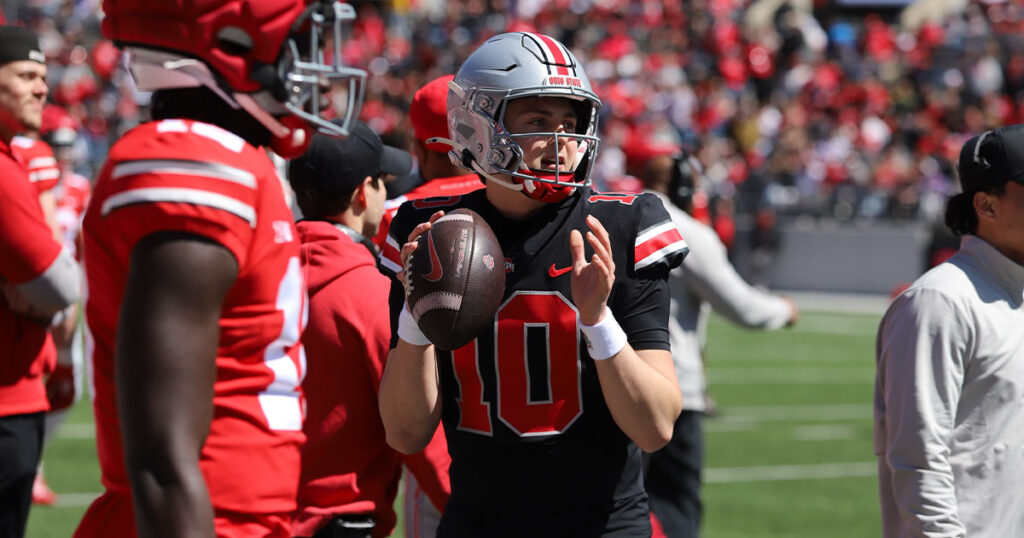
Ohio State head coach Ryan Day has yet to officially name a starting quarterback. However, the Sporting News not only expects Sayin to win out but also perform at quite a high level as well.
Sporting News: “Sayin – a redshirt freshman who transferred from Alabama after Nick Saban retired – was a five-star coming out of high school… (Lincoln) Kienholz has made a push for the starting job in spring practice, and coach Ryan Day likely will wait until fall camp to name a starter.”
Some serious College Football Playoff buzz is coming from Champaign. Altmyer figures to be the guy who will determine how far Illinois winds up going. Sporting News places him third overall, a solid spot for the Fighting Illini’s starter.
Sporting News: “Altmyer’s return is a huge reason why Illinois is being considered an early playoff sleeper team for 2025.”
Iamaleava spent this offseason as the top story in all of college football. He now settles into a new program at UCLA, hoping to just go out there and perform.
Sporting News: “Iamaleava is comparable to the next five-star QBs on this list, but he has enjoyed the most success on the field among those three QBs.”
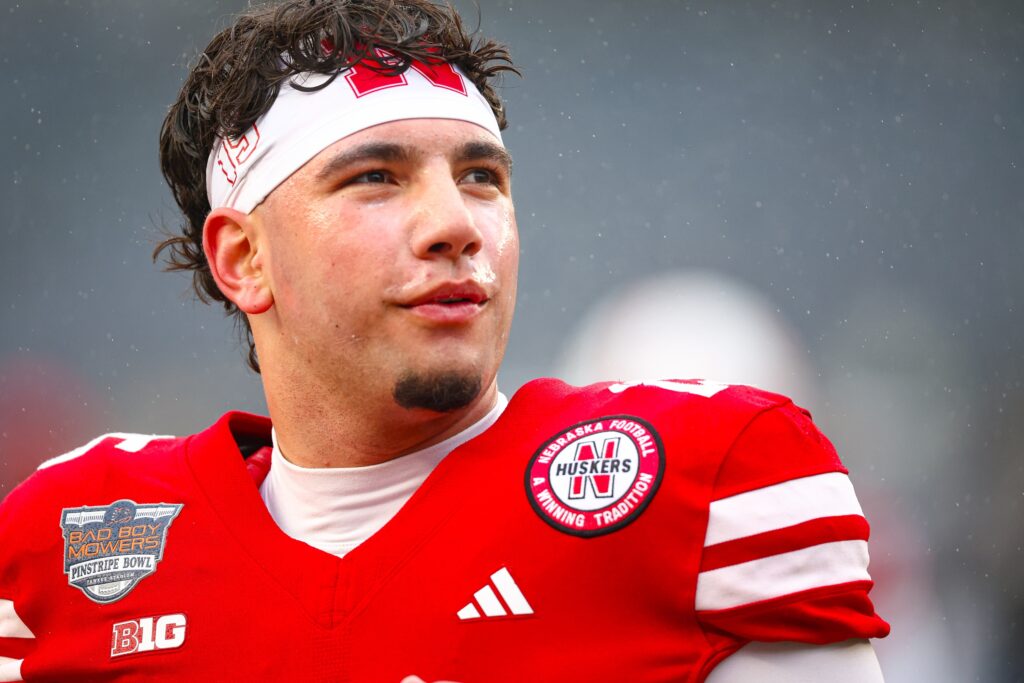
Raiola started the Big Ten quarterback’s youth movement last season, starting as a true freshman. Consistency will be needed by Matt Rhule this go-round, wanting to see massive strides during Raiola’s second year.
Sporting News: “There were ups and downs in his freshman year. Raiola did not have a 300-yard game, and he did finish with a conference-high 11 interceptions.”
There may not be a more discussed name leading into the season than Underwood. Someone who comes with a lot of hype during his recruitment, Michigan needs it to translate quickly for the true freshman.
Sporting News: “Underwood – the top quarterback in the 2025 recruiting class – remains the favorite to start. The 6-foot-4, 208-pound quarterback will have to hold off Mikey Keene, who started against Michigan for Fresno State in the opener last season.”
Moore made an unusual move in the NCAA transfer portal era, moving somewhere to be a backup. Time was spent behind Dillon Gabriel, learning the Oregon system. Whether or not the decision paid off will reveal itself quite quickly since the Ducks want to compete for another Big Ten title.
Sporting News: “Moore can be an efficient playmaker within the offense if he limits interceptions – which were a problem in his freshman year at UCLA.”
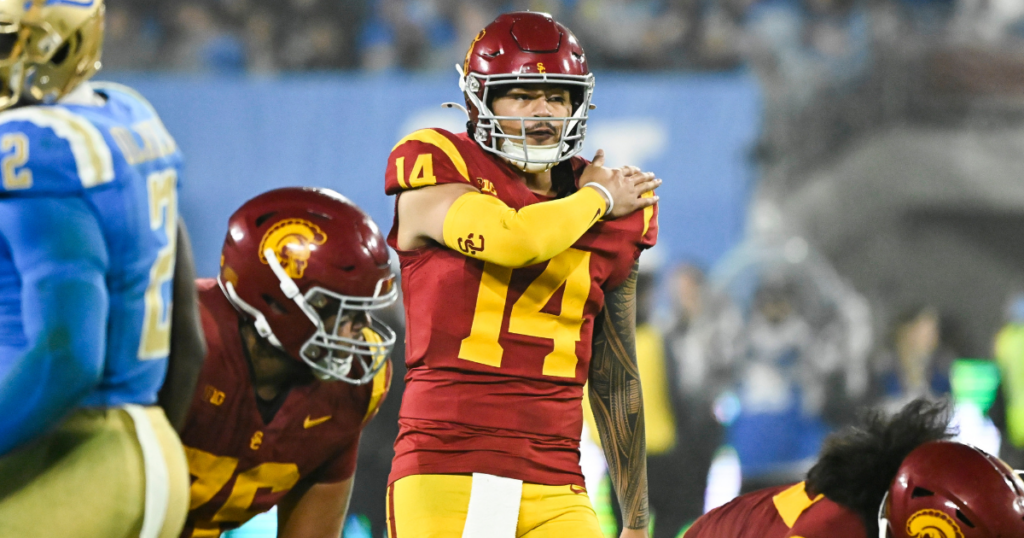
Lincoln Riley made the decision to move on from Miller Moss and fully install Maiava as the starter. Maiava now gets his chance to be the guy from the get-go as USC enters an important season.
Sporting News: “Maiava will have to improve on a 59.8% completion percentage this year, because the high-yield in a Riley offense is there in the Big Ten.”
Washington fans got a glimpse of what the future could be like in the final two games of 2024. The future has now arrived a few months later as Jedd Fisch gives Williams the nod.
Sporting News: “Williams is a 2025 breakout candidate if he can build on that strong finish from last year.”
Chiles followed the Michigan State coaching staff over from Oregon State, a huge win for the Spartans at the time. Now, he enters a second season as the starting quarterback, where improvements will be needed moving forward.
Sporting News: “Chiles had a bumpy first year as a starter with Jonathan Smith, but the second year at Michigan State should produce better results. Chiles flashed some play-making skills that led to the hype entering last season, but he struggled with turnovers against a brutal Big Ten schedule.”
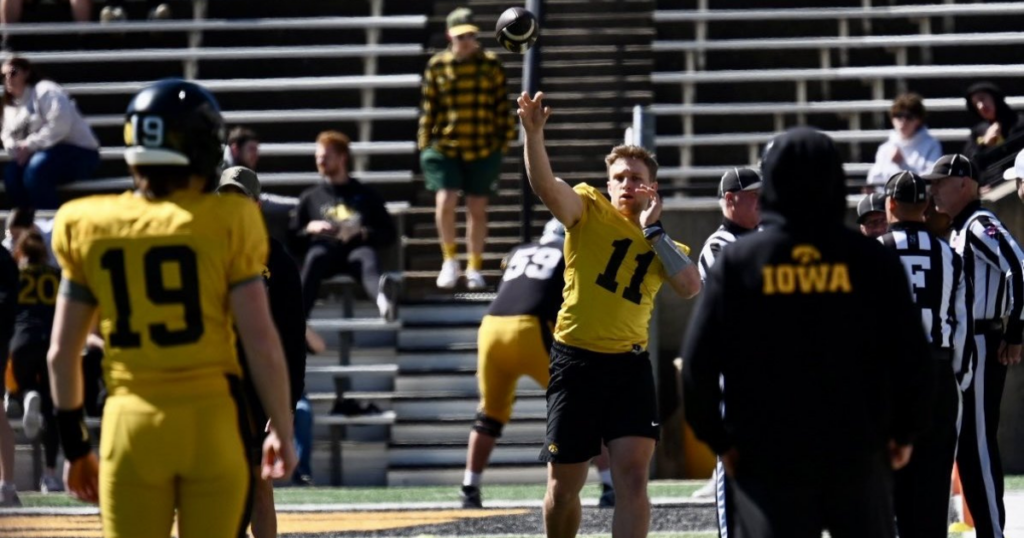
Iowa continues to search for answers at quarterback to improve the offense. Gronowski is an addition from the FCS ranks, hoping success from South Dakota State translates in the Big Ten.
Sporting News: “The Hawkeyes’ quarterback problems continued under long-time coach Kirk Ferentz… Will Gronowski change that? He won two FCS national championships at South Dakota State with 93 TDs and 20 interceptions.”
Sporting News found one area where Kaliakmanis needs to improve in 2025 — connecting with receivers at a higher clip. Taking care of the ball is already a strong suit and next steps are finishing with a better completion percentage.
Sporting News: “He had just one interception in Rutgers last four games, but he will need to improve on a 53.9% career completion percentage for the Scarlet Knights to move up the Big Ten pecking order.”
Curt Cignetti wants to get a little more quarterback magic out of the transfer portal. Mendoza may have a ceiling Indiana fans have not seen in a while, though, receiving first-round NFL Draft buzz.
Sporting News: “It’s another round of portal roulette, but Cignetti can make it work. We had the Hoosiers at No. 10 on this list last season.”
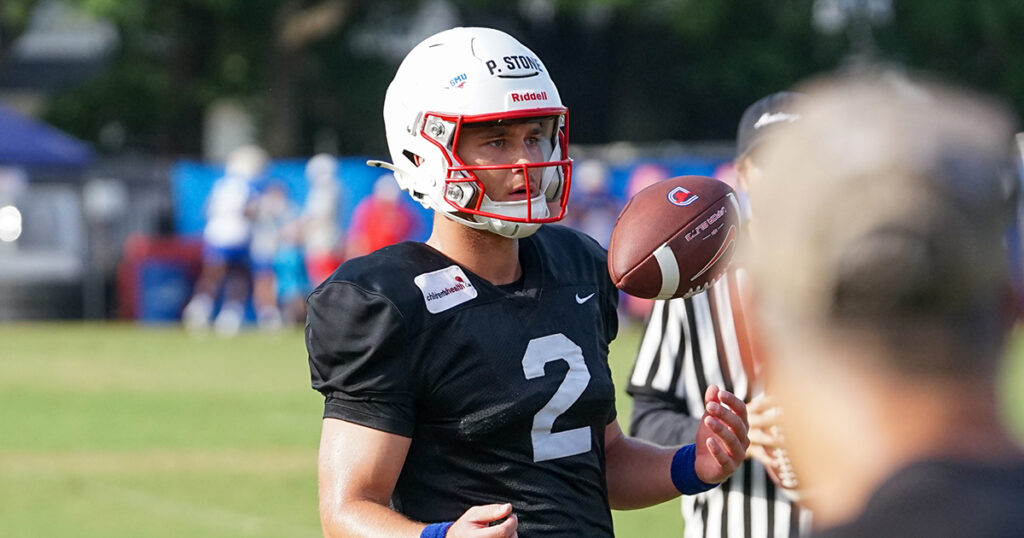
A starter at SMU to begin last season, Stone makes his way up to Chicagoland for another opportunity. This will be his final year of eligibility, looking to make the most of it at Northwestern.
Sporting News: “(Stone) gets a fresh start with third-year coach David Braun at Northwestern… He should fit well with second-year offensive coordinator Zach Lujan.”
Wisconsin has relied on transfer quarterbacks in years past, not finding much success. Everyone involved with the program hopes Edwards will be different — especially since he has Big Ten experience. Sporting News does not have much faith.
Sporting News: “It’s a complete reset at the position, and that means more unpredictable results.”
PJ Fleck has still not named a starting quarterback. No matter who goes out there, Minnesota does not have any starting experience on the roster. Lindsey slides down into the bottom three because of that, even if progress is expected.
Sporting News: “Lindsey is 4 of 5 for 50 yards and a TD in three appearances. He will improve under Fleck, but it will be a process.”
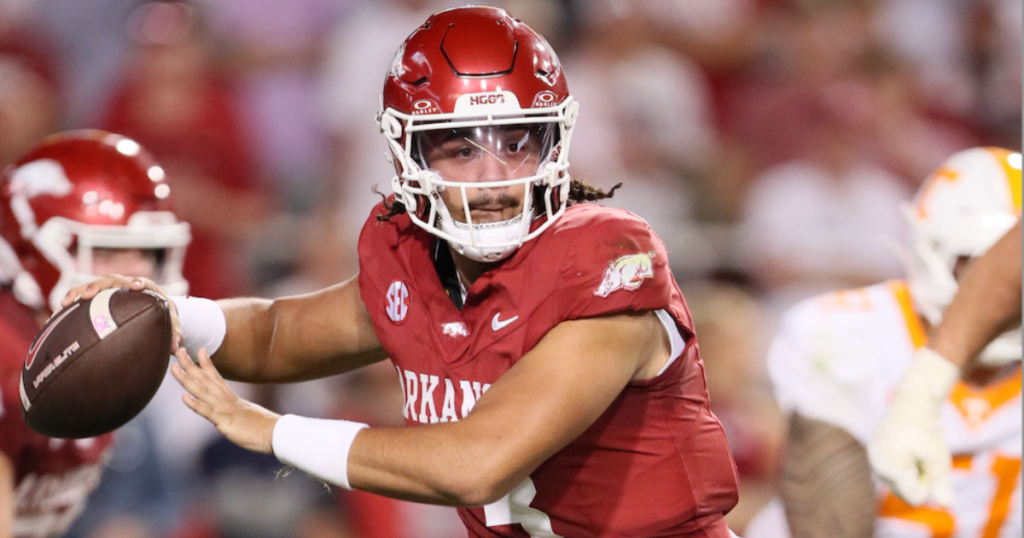
A lot of firsts are unfolding at Purdue this season, including head coach Barry Odom. He was able to land Singleton through the portal, somebody who got some run last season at Arkansas.
Sporting News: “(Singleton) should develop with new offensive coordinator Josh Henson, who was at USC the last three seasons.”
One of multiple UCLA quarterbacks who left this offseason, Martin made a trip across the country for his next spot. Sporting News believes there might be some competition from a true freshman.
Sporting News: “Martin made one start last season, and he passed for 167 yards and a TD at Penn State. Martin will have to hold off four-star freshman Malik Washington.”
NIL
5-star commit’s NIL deal revealed
Texas Tech football launched the biggest fireworks on the recruiting end for Fourth of July. Felix Ojo spurned multiple powers for the Red Raiders Friday. Becoming a rare five-star commit for the Lubbock university on the college football recruiting trail. But how were the Red Raiders able to coax the dominating tackle? Especially with Texas, […]
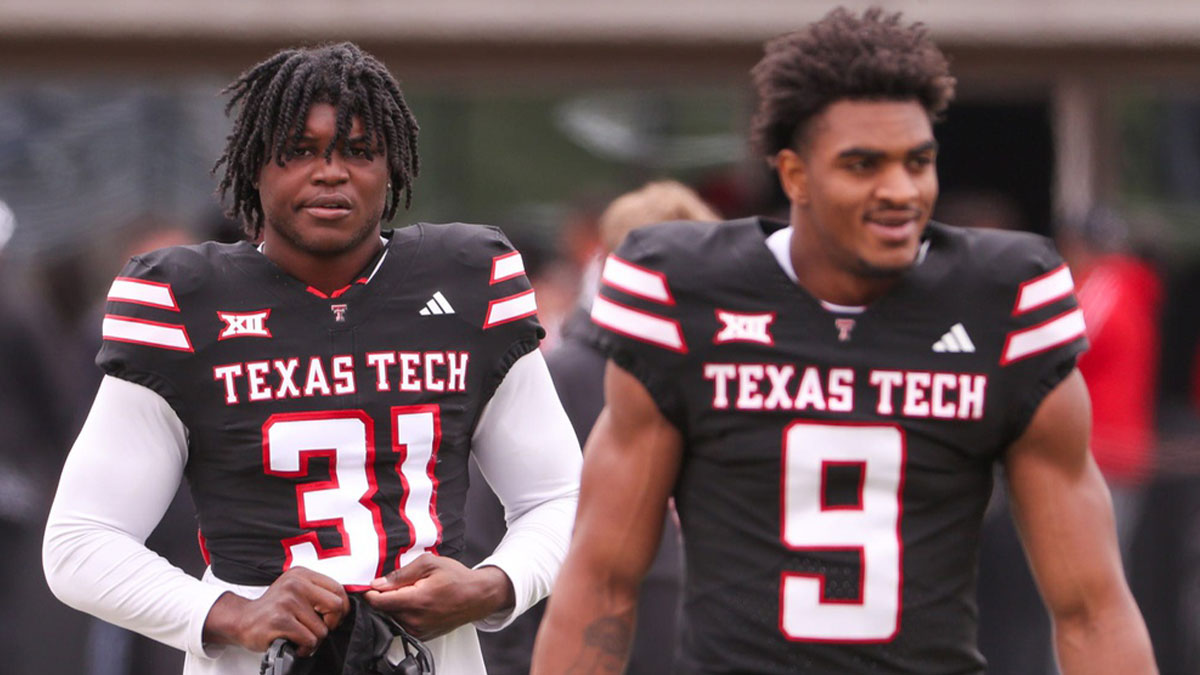
Texas Tech football launched the biggest fireworks on the recruiting end for Fourth of July. Felix Ojo spurned multiple powers for the Red Raiders Friday. Becoming a rare five-star commit for the Lubbock university on the college football recruiting trail.
But how were the Red Raiders able to coax the dominating tackle? Especially with Texas, Michigan, Florida even defending national champion Ohio State all in the final mix for him?
Texas Tech turned to NIL money to convince Ojo that Lubbock is the place for him. The Athletic helped pull back the curtain on the Red Raiders courting Ojo.
Ojo agreed to a three-year, $2.3 million revenue-sharing contract, The Athletic revealed on Saturday. But the outlet also delivered clarity on one reported contract involving the Mansfield, Texas talent.
How much Felix Ojo could earn after joining Texas Tech recruiting class
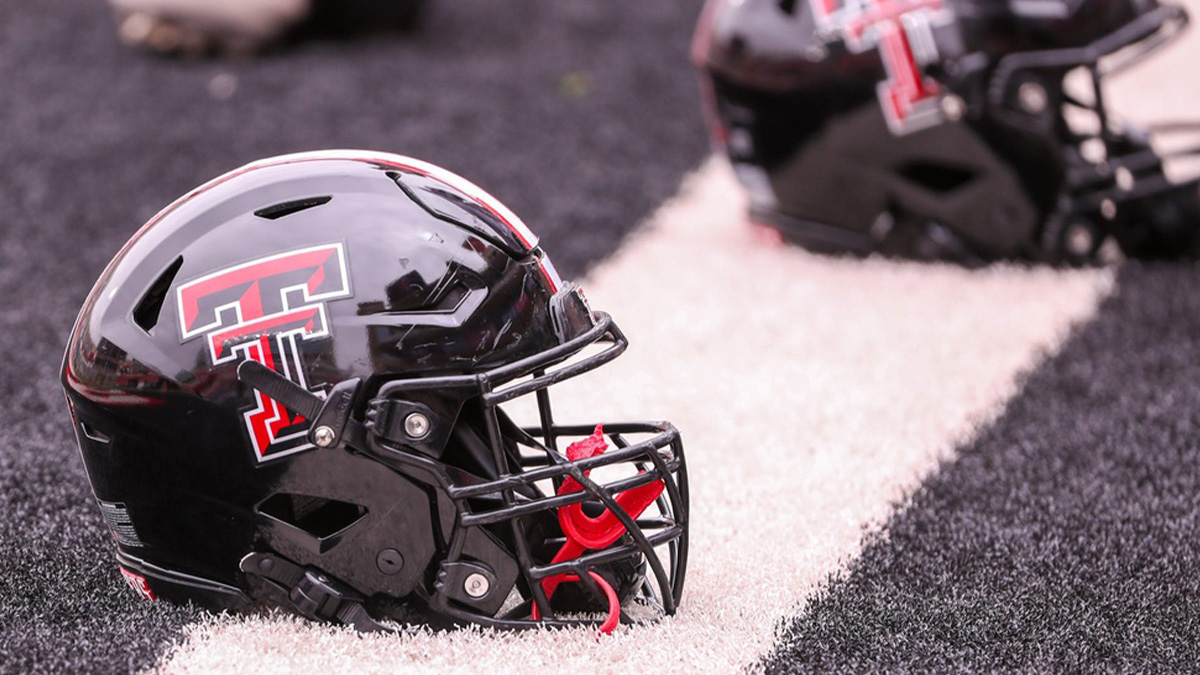
Ojo’s agent Derrick Shelby of Prestige Management spearheaded the NIL process for the newest Red Raider.
Turns out there was a contract figure that needed to be clarified by The Athletic.
“ESPN reported on Friday that Ojo was receiving a three-year deal worth $5.1 million, according to his agent, Derrick Shelby of Prestige Management. Shelby confirmed those figures to The Athletic on Saturday, but three Texas Tech sources refuted that number, with two confirming that Ojo is scheduled to receive an annual compensation of $775,000 per year for three years from Tech’s revenue-sharing pool,” the report reads.
There’s additional figures attached to Ojo. He received a verbal agreement “that can escalate the total value of the contract into the $5 million range.” However, that figure surfaces “if there were a large jump in the revenue sharing cap for schools or if there is minimal regulation of schools’ adhering to the cap.”
Ojo isn’t the only massive recruiting win. Four-star safety Donovan Webb spurned Michigan for Texas Tech on Wednesday. Webb originally was favored to land with the Wolverines per multiple outlets. Texas Tech is now 25th overall in the national recruiting rankings per 247Sports for the 2026 class.
NIL
College sports has a soft salary cap now. How does it work?
College sports has another before and afterdate. Before July 1, 2025 – this Tuesday – athletes could make money off their name, image and likeness (NIL) but not be paid directly by their schools. And after July 1, that has changed, making college sports look and feel even more like the pros. Some of the […]
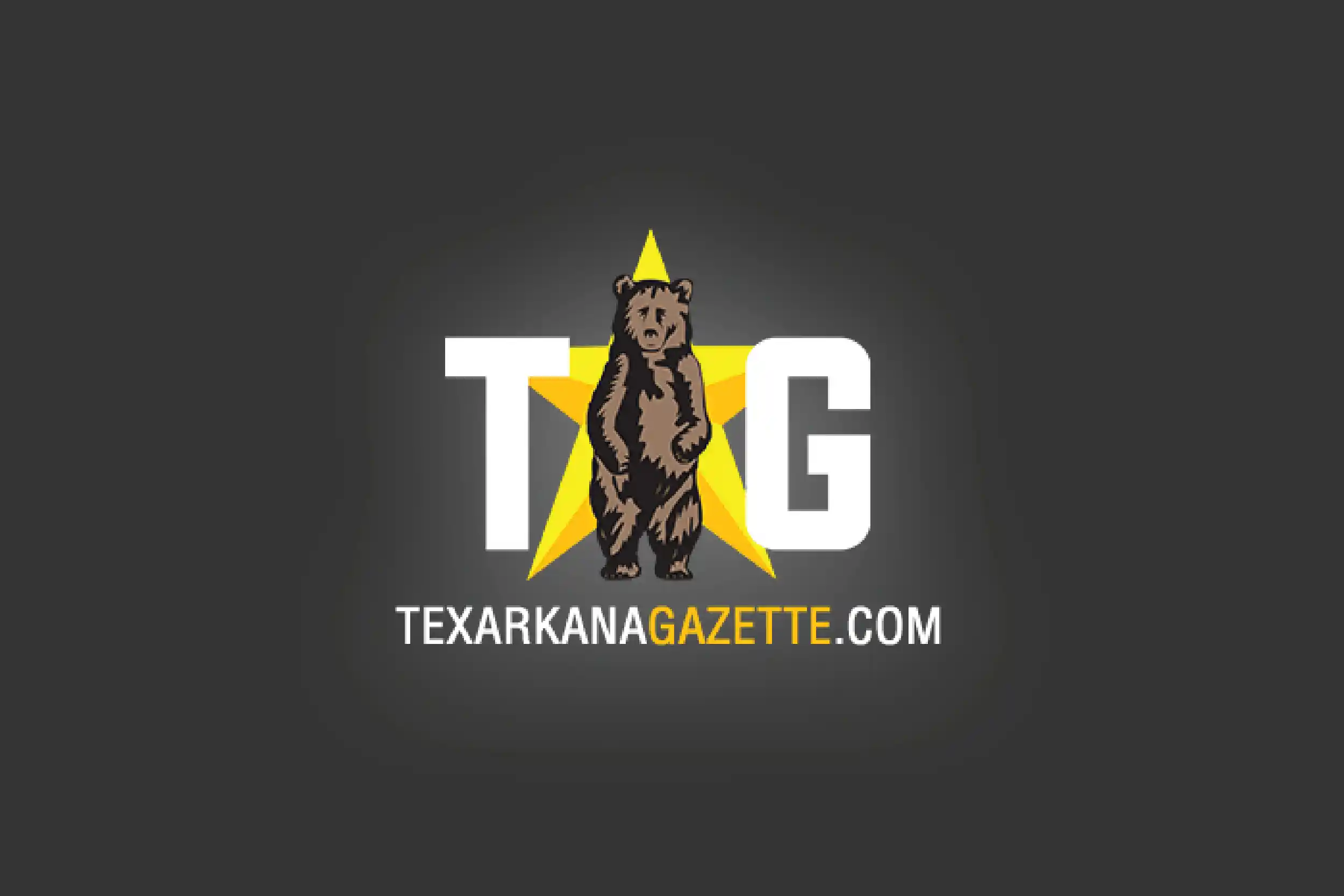
College sports has another before and afterdate.
Before July 1, 2025 – this Tuesday – athletes could make money off their name, image and likeness (NIL) but not be paid directly by their schools. And after July 1, that has changed, making college sports look and feel even more like the pros.
Some of the long-standing differences and caveats still apply. College athletes are not considered employees. Therefore, unlike athletes in the NFL, the NBA, the WNBA, the NHL and MLB, their pay and working conditions were not established through a collective bargaining process. But at least one major change will be familiar to any fan of those professional leagues.
College sports has a (soft) salary cap now. Let’s unpack.
HOW DID THIS COME ABOUT?
At the most practical level, the soft salary cap (or revenue sharing cap) is part of the massive legal settlement approved in early June. Commonly referred to as the House settlement, it consolidated three antitrust cases, all of them challenging past restrictions of college athlete compensation. And in that process, the defendants – the NCAA and the power conferences – agreed to allow schools to share revenue with (or pay) athletes directly for the first time. That officially started Tuesday.
Lawyers for the defendants and plaintiffs settled on an initial annual cap of $20.5 million per school. That is for athletes across sports, though a bulk of the money will go to salaries for football and men’s basketball players. Not every school will spend to the cap, though many power conference programs will. More than 300 Division I schools have opted into the new economic model, meaning they can pay athletes – up to that cap – but also have to abide by new roster limits in each sport. Schools that chose not to opt in are not allowed to pay athletes through revenue sharing. For now, this cap explainer is not relevant to them.
WHY $20.5 MILLION?
The starting cap was calculated by taking 22 percent of the average athletic revenue for power conference schools. In this case, the figures were from the 2023 and 2024 fiscal years. Importantly, only a specific set of revenue streams was considered, which has the attention of the plaintiffs’ attorneys for House. Each year, the settlement will require the NCAA to share the data used to calculate the cap with the plaintiffs’ attorneys. From there, the settlement permits the attorneys to “reasonably audit” the data – and this week, Steve Berman, one of the lead attorneys, told USA Today they are doing just that. In question is whether certain revenue streams were not counted and should be, which could increase the initial number.
Berman told USA Today that he is fine with going ahead with $20.5 million for 2025-26. But if the number were recalculated in an auditing process …
… THAT WOULD BE SIGNIFICANT. WHY?
Great question. Perfect time to ask.
The settlement is a 10-year agreement. The cap will rise and recalculate throughout that span. There will be a 4 percent bump before the second, third, fifth, sixth, eighth and ninth years. There will be a recalculation, using that same 22 percent formula, before the fourth, seventh and 10th years. So if the baseline changed because of an immediate audit of the $20.5 million figure, there could be a trickle-down (or trickle-up?) effect on the initial annual increases.
WHAT COUNTS AS SPENDING TOWARD THE CAP?
Three streams: revenue-sharing money paid to athletes, which will essentially function as salaries; scholarship spending above previous NCAA limits; and other education-related payments, known as Alston money.
Alston money can account for up to $2.5 million per year toward the cap. Same with scholarship spending, though that part is a bit trickier to explain. The settlement permits schools to pay an uncapped amount of scholarship money to a fixed number of athletes across sports. Or in other words: Previous limits on scholarship spending have been replaced by new roster limits, meaning more money distributed to fewer athletes. A football team, for example, can carry a maximum of 105 players and offer 105 full scholarships, if it so chooses. But as far as the $20.5 million cap is concerned, only scholarship money spent above previous NCAA limits – and only up to $2.5 million per year – will count toward it. Confused? Welcome to the life of a longtime college compliance staffer.
WHY HAVE YOU REPEATEDLY REFERRED TO THIS AS A SOFT CAP?
Another great question.
Until this point – before July 1, 2025 – boosters funded five-, six- and seven-figure salaries in football, men’s basketball and, to a lesser extent, women’s basketball and other sports. With rules established by the settlement, the NCAA and the power conferences hope to change that. Any NIL deal that exceeds $600 will have to go through a clearinghouse, which will trigger a review of who is paying and what services they will receive from the athlete, among other factors. The hope, for the leaders of college sports, is to eliminate situations in which an athlete receives $500,000 for a few social media posts.
At the highest levels of the biggest sports, those deals have fueled the NIL economy for the past four years. Donor groups, known as NIL collectives, typically have brokered them. Many legal experts are skeptical that the enforcement efforts would hold up against more antitrust suits.
And throughout the history of college sports, there’s at least one certainty: Motivated rich people will find a way to help their teams win. For that reason – that donors and NIL collectives will help schools spend above the $20.5 million barrier – it feels most responsible to call it a soft cap. The whole system could put at least some athlete payments back under the table, such as when they used to be delivered in McDonald’s bags before the NCAA changed its NIL rules in 2021.Plus, beyond donor money, schools and collectives can still help athletes land brand deals to enhance their income.
At the top of college football and basketball, spending from the revenue-sharing pool will be viewed as a baseline. It will, as ever, take a lot more money to thrive.
-

 College Sports1 week ago
College Sports1 week agoWAC to Rebrand to UAC, Add Five New Members in 2026
-

 Technology3 weeks ago
Technology3 weeks agoPolar is teasing a Whoop alternative without subscription
-

 Motorsports5 days ago
Motorsports5 days agoWhy Cosmetics are Making Up for Lost Time in Women’s Sports
-

 Technology3 weeks ago
Technology3 weeks agoI loved the Whoop MG, but didn’t love the price: that’s why I’m excited about this mysterious new fitness band from a major Garmin rival
-

 NIL3 weeks ago
NIL3 weeks agoGo Straight to Collective Bargaining (Part II) ✦ OnLabor
-

 College Sports3 weeks ago
College Sports3 weeks agoLocked On Women's Basketball
-

 Professional Sports2 weeks ago
Professional Sports2 weeks agoAlex Pereira responds to rumors of UFC heavyweight title fight with threatening message
-
College Sports2 weeks ago
Women's Basketball Thanks Shannon LeBeauf for 14 Seasons
-

 Technology1 week ago
Technology1 week agoPet fitness and wellness trends for a healthier and happier dog
-

 College Sports2 weeks ago
College Sports2 weeks agoAlabama Basketball






































